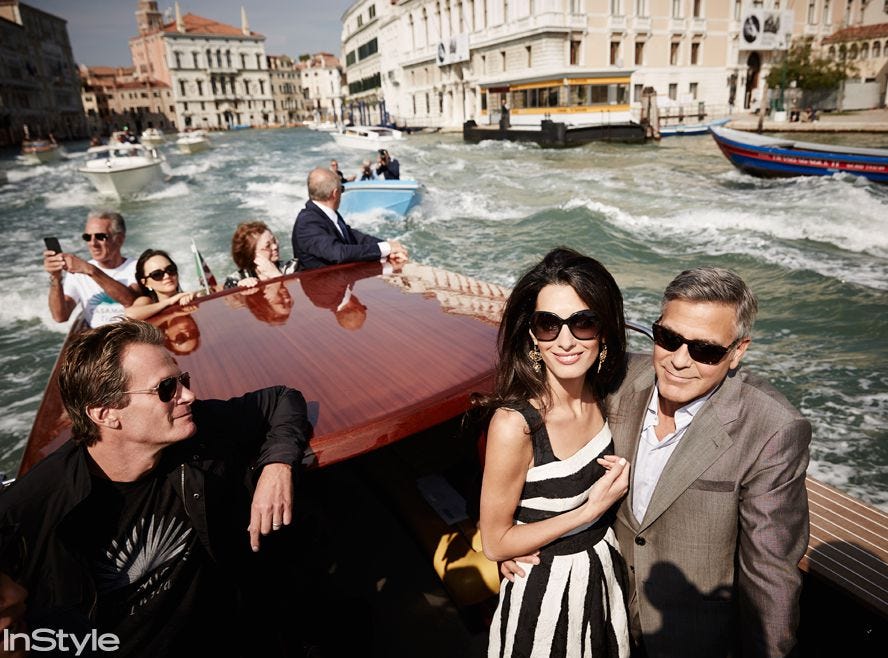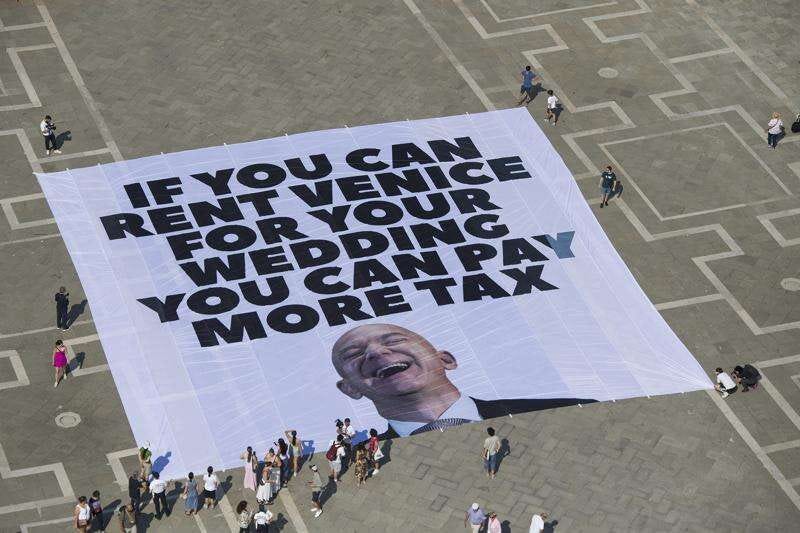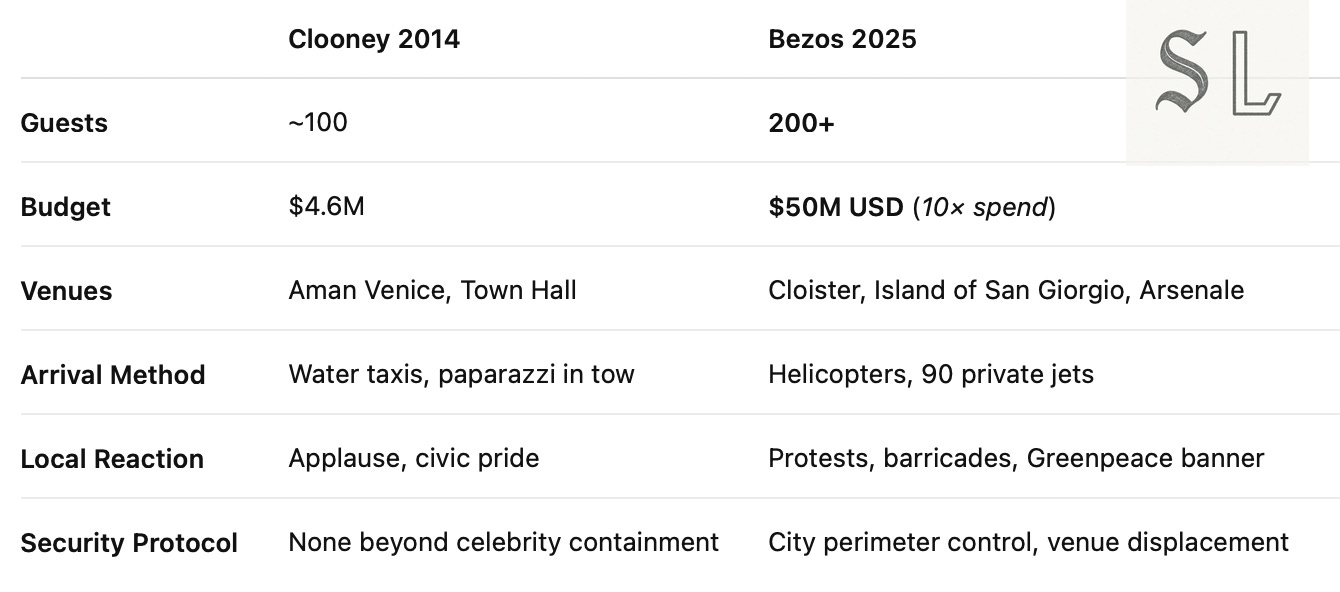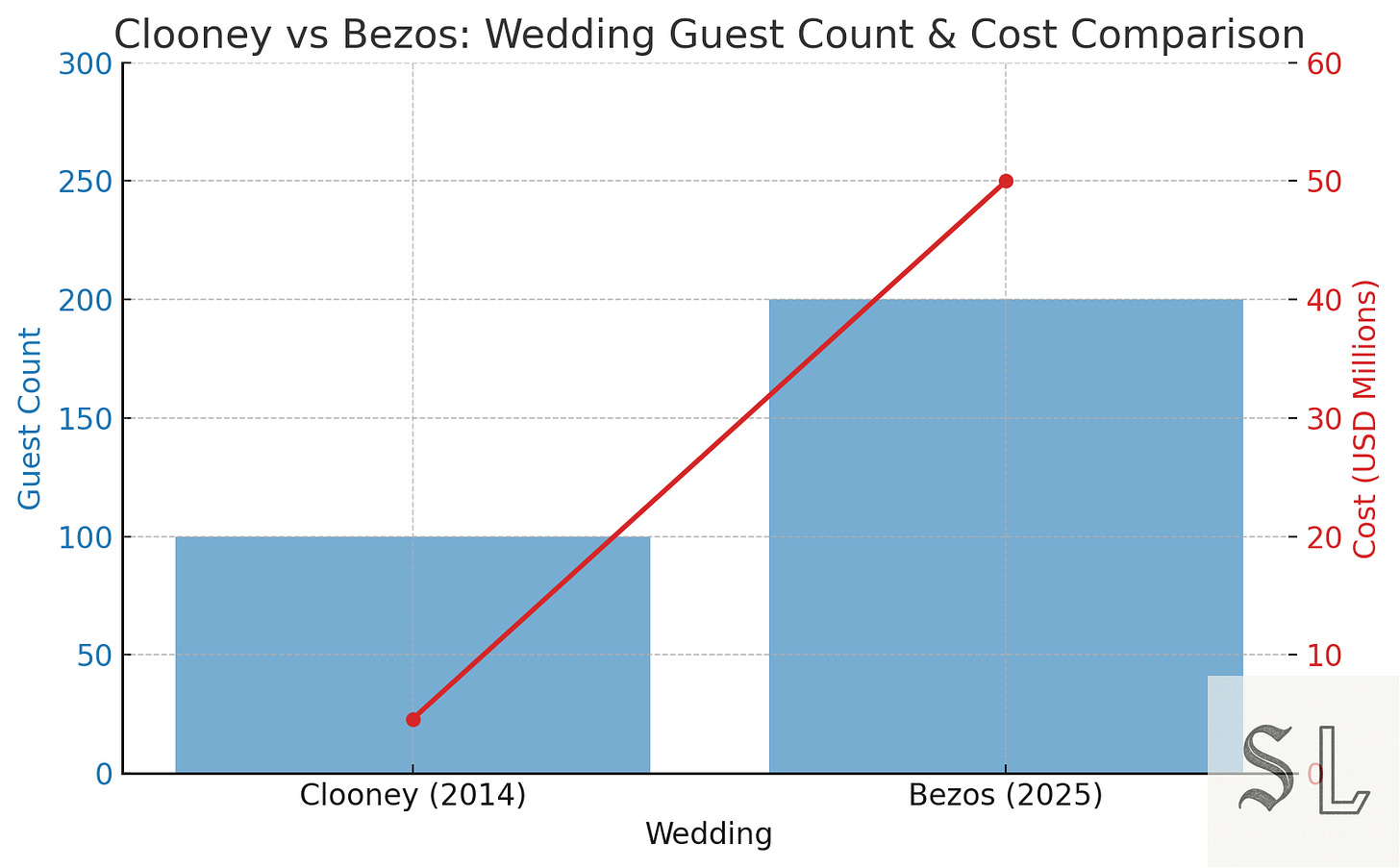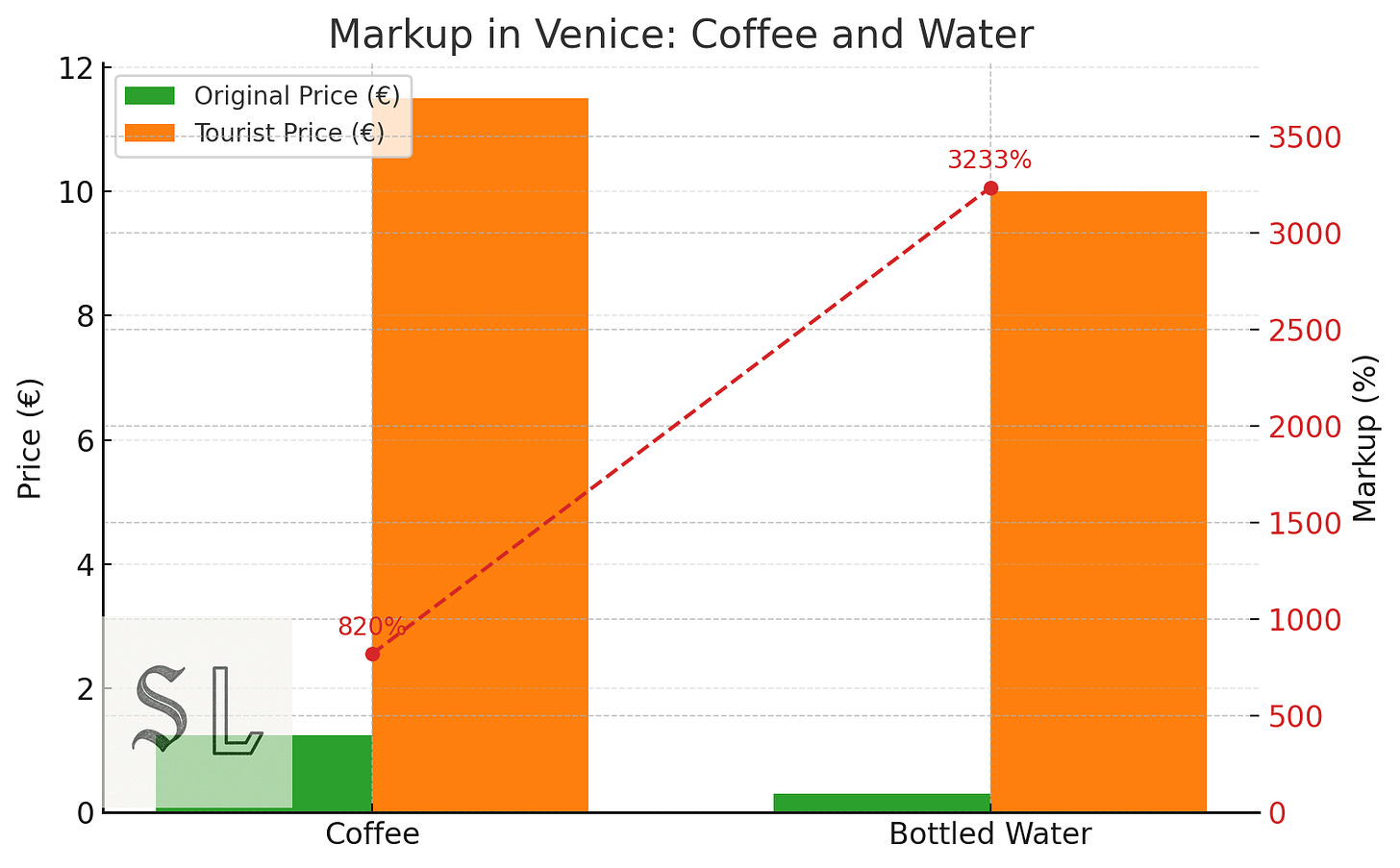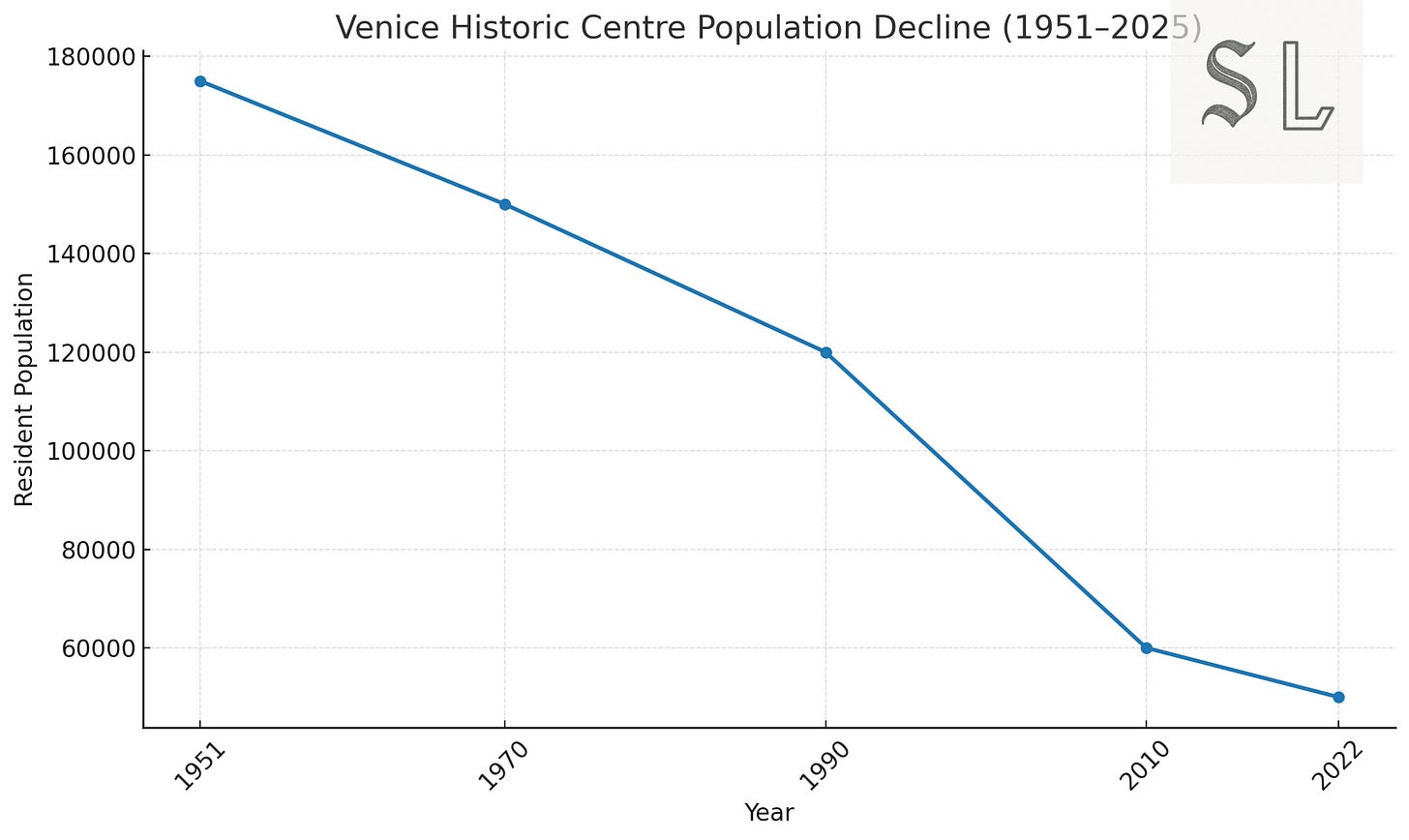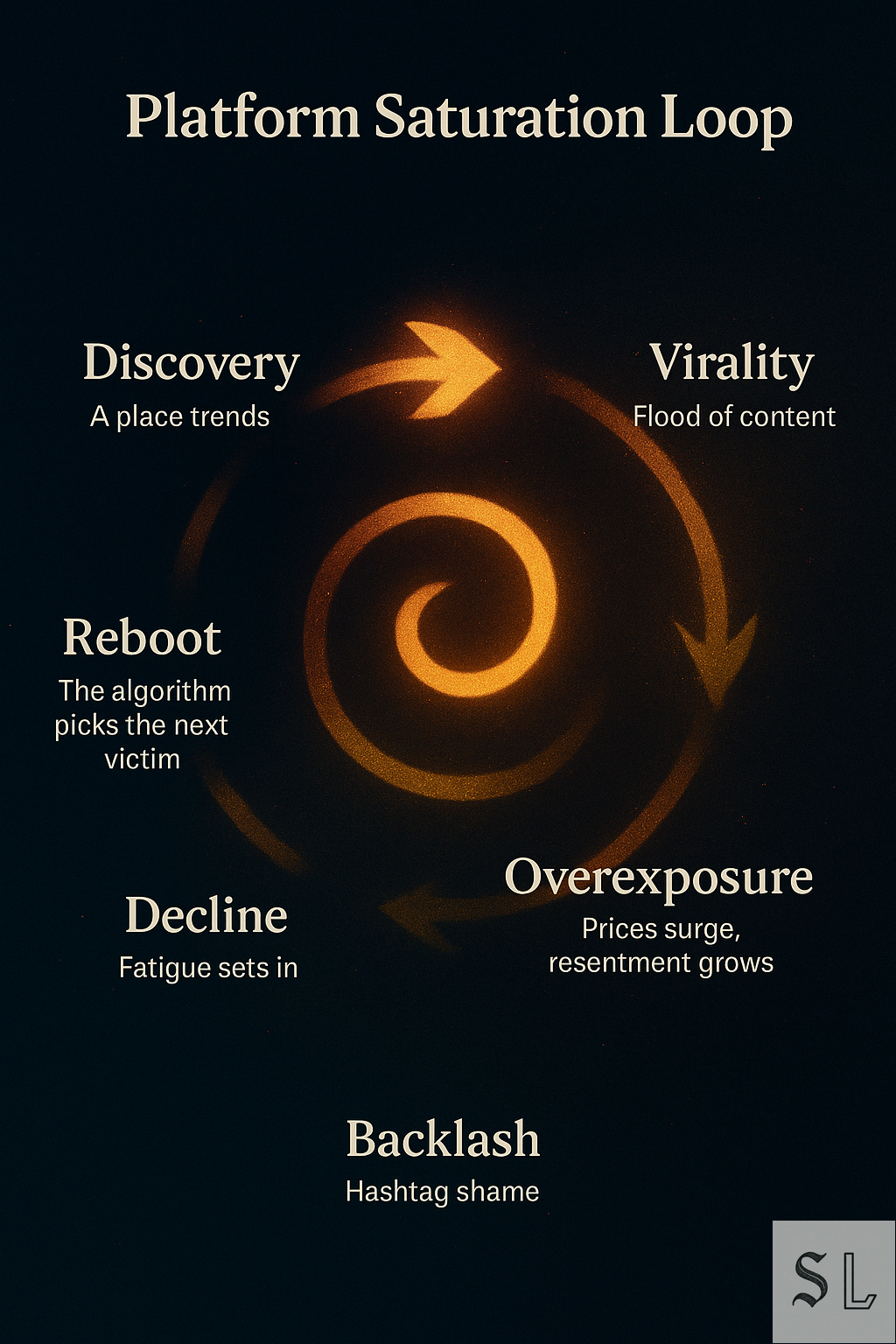From Armani to Armageddon: How Clooney Wooed Venice and Bezos Wiped It Off the Map
Clooney brought romance. Bezos brought collapse. On Venice, algorithmic tourism, and what happens when cities become content and civic life becomes inventory.
👋🏼 This is part 5 of System Studies: Travel, our 9-part travel series on the concept of the “It” Place. So far we’ve covered proximity collapse, burrata, aesthetic templating, and influencer saturation.
It just so happens that the gods have smiled upon Strange Loop and the Bezos wedding spectacle provides the perfect case study to talk through what happens when a city’s beauty becomes more profitable than its survival.
Coming up later this week:
Pt 3 on the future of theatrical cinema (Catch up: pt 1 and pt 2)
Queer Gayming: how fandoms become forecasts for gaming IP
And if you don’t mind, consider subscribing. You’ll get first access, exclusive experiments, archives, and… well… the chance to support the writing you’re (hopefully) enjoying.
Let’s begin.
The Same City, a Decade Apart
George Clooney arrived in Venice by boat, Jeff Bezos arrived by helicopter.
In 2014, the groom wore Armani. In 2025, he wore orbital dominance. One wedding charmed the city. The other triggered barricades, protest chants, and a Greenpeace banner depicting the groom’s face like a Bond villain.
Same canals. Same Renaissance palazzos. Same operatic light bouncing off the water. But something fundamental had shifted.
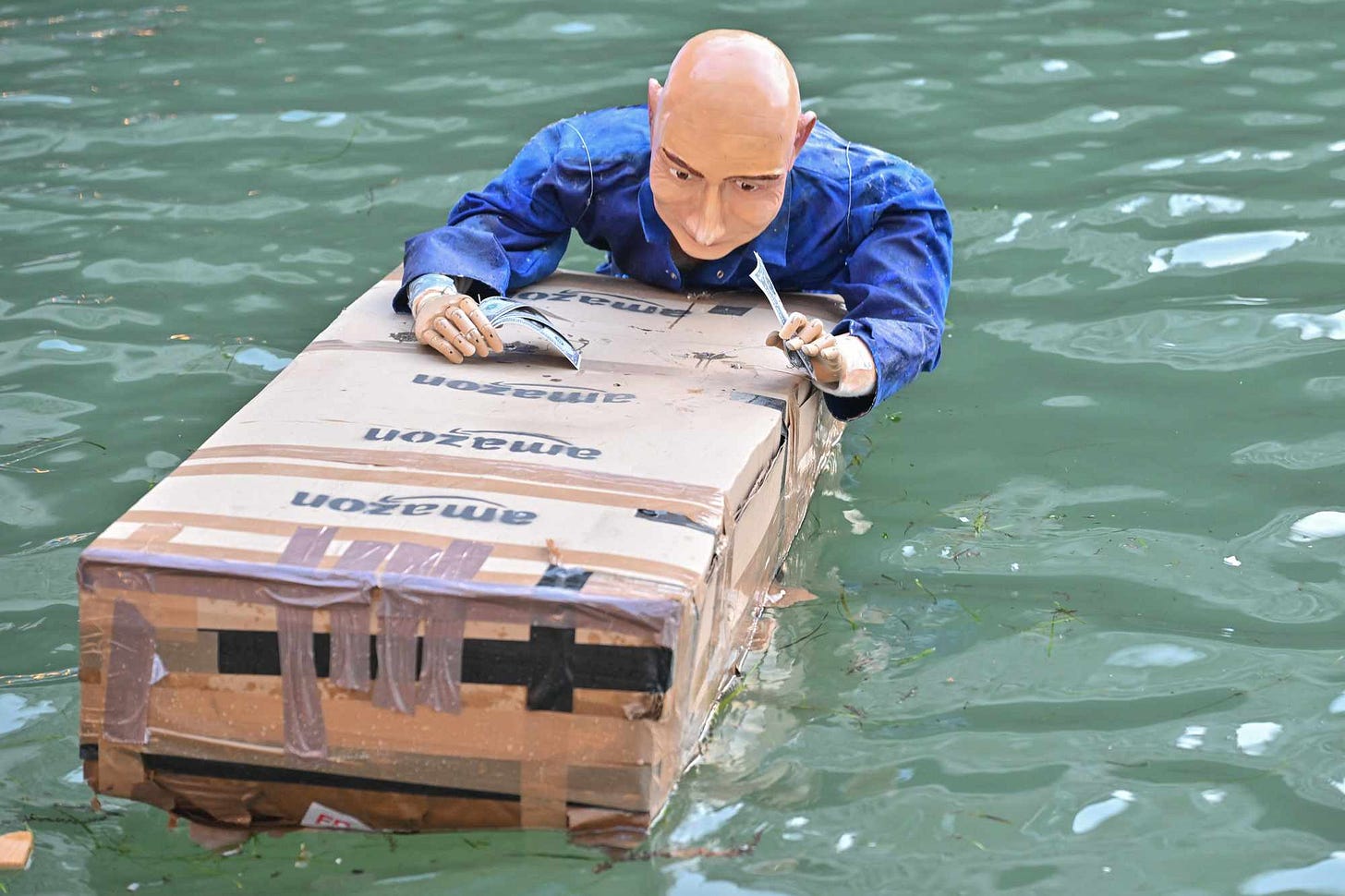
In the ten years between Clooney’s wedding and Bezos’s, Venice didn’t change, it collapsed. Not visibly and not all at once, but economically, socially, and culturally. It became something new: an aesthetic arbitrage machine. A city priced out of itself. A platform-stage dressed as a destination.
Clooney’s wedding was expensive. Bezos’s was extractive. Clooney invited the paparazzi to document his fantasy. Bezos required a security perimeter and riot protocols.
Clooney’s €4.6 million affair was lauded by local officials as a gift to the city. Bezos’s $50 million pageant was described by activists as a soft coup, a sort of hostile takeover in tuxedo drag.
And yet: the guest lists weren’t so different. The venues overlapped. The champagne probably came from the same hillside.
So what changed?
The answer (and the reason this essay exists) is not in the guest count or the price tag. It’s in the systemic shift behind the spectacle.
Because this isn’t a story about two weddings. It’s a story about a decade that turned cities into content, meaning into markup, and love into logistics.
And Venice — romantic, fragile, algorithmically overexposed Venice — just happened to be the perfect stage to show us what happens when a place stops being a place and starts being a feed.
Today we’re talking about:
Why George Clooney’s €4.6M wedding was viewed as romantic and Jeff Bezos’ $50M triggered the world
The €43 coffee that went viral, and what it tells us about algorithm-priced cities
How Airbnb turned Lisbon into an interface and Venice into a liquidation
What happens when a city isn’t lived in, but staged for content extraction
When tourism stops being an economy and becomes a system of collapse
The tipping point: why 2024–25 marked the global shift from “please stay away” to “you’re no longer welcome”
And what it means when the algorithm no longer recommends a place but instead overwrites it
Weddings as Weather Vanes
Weddings, like cities, have become scalable events, more asset than ritual. And like all assets in late capitalism, they have to deliver: status, narrative, spectacle, ROI. Clooney and Bezos both married in Venice. Only one of them turned the city into a staging ground for geopolitical aesthetics. But was it his fault, or has the world around him changed?
Let’s run the numbers:
Clooney’s guest list hovered around 100; Bezos doubled it. Clooney spent $4.6 million; Bezos spent ten times that. Clooney arrived with paparazzi in tow. Bezos arrived with 90 private jets. One used Aman Venice as a romantic set piece. The other rerouted entire city functions to avoid confrontation. What looked, superficially, like two celebrity events in the same city was, structurally, a shift from civic participation to urban possession, from performance to protocol.
The applause-to-protest ratio alone tells the story: even adjusting for inflation, the data goes beyond scale to signal.
The final event, initially planned in the city centre, was moved to the Arsenale, a fortified shipyard on the edge of Venice. Not for convenience but for containment. Bezos didn’t just need a venue. He needed a buffer. The city had gone from infrastructure to resistance.
The difference between the two weddings is not just €45 million, it’s the shift from event to extraction. And it confirmed what we already suspected:
The aesthetic is still intact. But the city is gone.
The Economic Absurdity Index
When a city collapses, it doesn’t look like rubble as much as a €43 coffee.
Let’s be precise: in August 2018, at Caffè Lavena in St. Mark’s Square, a tourist ordered two bottles of water and two espressos. The bill: €43.
The markup?
820% for coffee (from €1.25 inside to €11.50 outside)
3,233% for bottled water (from €0.30 at a supermarket to €10 at a table)
The incident went viral: 10,000 Facebook shares in 48 hours, covered by Reuters, CNN, and Corriere della Sera. The owner defended the price: “You pay for the orchestra, the view, the history.”
What he didn’t say is what everyone already knew: you pay because you’re trapped.
Venice isn’t alone. The absurdity is scalable.
Santorini: €50–80 for a sunbed with minimum spend.
Ibiza: €100 daybeds, €10 water bottles, €15 beers.
Tulum: $200 taxis from the airport, cartel-controlled.
Lisbon: 25,000 apartments—8% of the city’s housing—converted to short-term rentals.
Barcelona: Rents up 68% in 10 years. House prices up 38%. Tourist flats to be fully eliminated by 2028.
Mallorca: 50,000 protesters in July 2024 — the largest anti-tourism demonstration in European history.
This is systemic distortion, not inflation — an economic feedback loop where tourists don’t pay for goods or services, they pay for position inside the algorithm.
A €10 cappuccino isn’t about caffeine; it’s your access cost to content zones. It’s not the view. It’s the reel potential. You’re not buying coffee. You’re buying legibility.
The logic of collapse is clearest in housing:
Venice: Population drops below 50,000 for the first time — down 71% since 1951
Lisbon: Local wages stagnate. Tourist demand forces rent hikes citywide.
Barcelona: Local government to reclaim all short-term tourist flats by force
Dubrovnik: UNESCO threatens to revoke status. City caps cruise passengers. Old Town becomes Airbnb ghost zone.
These aren’t isolated datapoints, but instead indicators of a conversion economy, where everything that can be monetised is, and everything that can’t be monetised is removed.
Local grocers become luggage storage. Hardware shops become gelaterias. Family homes become content backdrops.
And all of it gets justified with the same circular logic: “Tourism creates jobs.”
Yes.
So does disaster capitalism.
When a Place Becomes Platform
Venice has gone from city to template:
Aesthetic inputs go in: gondolas, sunset, Aperol, decaying fresco.
Content outputs come out: reels, swipe-ups, sponsored prosecco.
The city has become a user interface, something you move through not to experience, but to optimise.
And the metrics don’t lie:
#Venice: 9.8B views on TikTok.
#DestinationWedding: 2.7B views — spiking during Bezos’ ceremony.
#OverratedPlaces and #StayAway now trend alongside them.
One viral video during the wedding stitched together Bezos in his tux with protesters chanting “Your holiday, our misery.” It got more likes than any official media coverage of the wedding itself.


